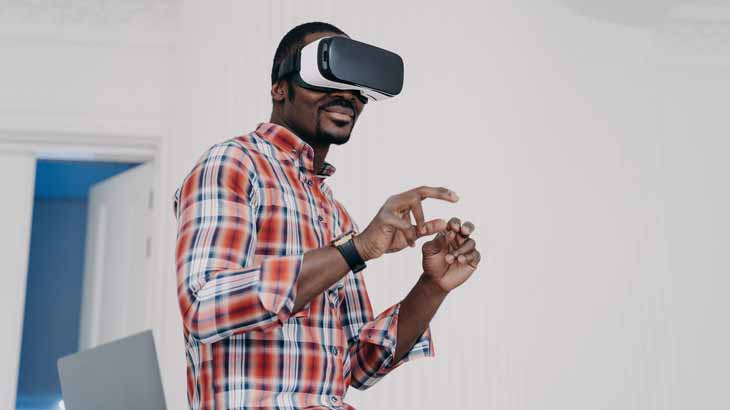Immersive technology uses a variety of devices to create a look-alike reality for users. It can also include sensory elements such as a virtual smell or touch.
Whether it’s in education, the adult industry or art immersive tech has become a powerful tool. It is changing industries and helping to improve customer experience.
Virtual Reality
Virtual Reality uses a headset to immerse the user in a simulated world that mimics life-size images of a 3D environment. This technology can also incorporate haptic feedback or tactile elements to create an even more realistic experience.
The headsets use sensors to track the movement of the eyes and head in order to adjust the content to match that motion. These are known as three or six degrees of freedom (3DoF and 6DoF respectively) and make VR feel more realistic by mimicking real-world movement.
Many games and experiences take advantage of VR to create immersive environments that are both entertaining and educational. In healthcare, VR can help distract patients from pain during treatment by immersing them in a gaming experience that is designed to distract them. It can also allow surgeons to perform surgery simulations and even watch other surgeons perform operations from a first-person perspective.
Augmented Reality

It’s important to understand the different types of immersive tech. The main categories are virtual reality, which shuts out real world spaces and augmented reality, which combines digital content with physical objects.
Brands are leveraging immersive technology to make their experiences at trade shows and conferences memorable and engaging for customers. For example, Nordstrom recently created a VR experience where shoppers could design their dream home and see how it would look using products in-store before making a purchase.
This type of immersive content works with all learning styles, including visual learners, auditory learners, and haptic learners. It can also tap into the senses, like adding scent to a virtual tour or taking a customer on a field trip of the Roman Colosseum without leaving the office.
Augmented reality requires a special hardware and software system called computer vision to interpret the physical world and overlay digital content at the right place and angle. This is a complex problem and there’s an entire branch of computer science dedicated to solving it.
Mixed Reality
MR mixes virtual content with the physical world to create immersive experiences. It involves wearables like VR headsets, smart glasses, body suits or gloves, and haptic devices to provide the experience of touch. It’s a more advanced technology that uses sensors, cameras and graphical computational power to interact with digital content in a physical environment.
Using mixed reality, you can see 3D holograms that can be superimposed on the real world, bringing new dimensions to your digital interaction. It’s also used to give you a first-person view of a scene, such as a virtual game or video conference call.
It helps people learn using the best method that works for them – visual, auditory, or even haptic. It also enables doctors and healthcare providers to practice surgeries on patients remotely. In addition, it helps in relieving pain by immersing patients in an immersive experience that distracts them from their physical pain. It can be used to train workers and increase productivity in a variety of industries.
Virtual Environments
A virtual environment is an immersive experience that replicates a real-world setting using computer generated graphics. It works with a headset, intelligent wearables, haptic devices like gloves or controllers to create a look-alike reality.
HYBRID/REMOTE WORKFORCE
Companies are turning to immersive technology to solve business challenges such as remote workforce training. They can leverage augmented reality and VR to train employees in a more interactive way that is more engaging than traditional learning methods.
In the gaming industry, immersive technology is used to create highly engaging games such as Beat Saber and Fallout. It also helps to create immersive architectural and building visualizations, as well as a tool called Cosmos VR that allows people to visit different galaxies.
Conclusion:
Immersive technologies are relatively new with plenty of gray areas, including security and privacy concerns. Many digital applications collect data to improve user experience, and hackers can easily retrieve this information. To mitigate these risks, you should always read a privacy policy before using any immersive tech tool. In addition, you can protect your personal data with a virtual private network to prevent hacking and eavesdropping attacks.
